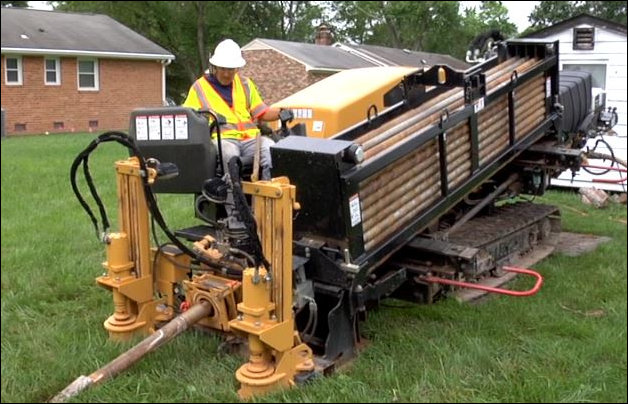by James A. Bacon
The State Corporation Commission ruled earlier this week that Dominion Virginia Power can recover up to $140 million on what it has spent to bury about 400 miles of electric distribution lines. By putting the overhead tap lines of the 6,000 most outage-prone customers underground, the electric company hopes to significantly reduce time spent restoring electric power after hurricanes, ice storms and other widespread service disruptions. The benefit to improved reliability will cost customers an average of fifty cents to the monthly bill.
The General Assembly had passed enabling legislation in 2014 but the State Corporation Commission (SCC) turned down Dominion’s first proposal to bury 4,000 miles of overhead lines serving some 150,000 customers on the grounds that there was insufficient data to show a positive cost-benefit ratio. But the SCC approved the pilot program, which will apply retroactively to overhead lines that Dominion has already buried, with the expectation the Dominion will regularly provide data on outages and restoration times to use in evaluating the program.
“If we were to get the full 4,000 miles of underground line, it would cut the typical hurricane outage period of seven to ten days in half,” says spokesman David Botkins. There is no way to estimate what difference the pilot project will make until the data comes in, but he said Dominion targeted “the most outage-prone and most difficult to repair tap lines” in its service territory — “the worst of the worst.”
In granting approval, the SCC wrote, “We find that the [project] satisfied statutory requirements, and is reasonable, prudent, and in the public interest.”
Even with the kind of automated equipment shown in the photo above — Dominion will not be handing the job over to ditch diggers — the expense is considerable. The cost of $140 million spread over 6,000 customers is $23,000 per customer. Dominion’s long-term vision, covering about 150,000 customers, would cost an estimated $2 billion.
But Dominion contends that cost-per-customer is not a relevant metric. Payback will accrue to all customers when restoration is shorter following large weather events, allowing the Commonwealth to return to normalcy sooner, says Botkins. In fact, an industry expert estimates that the economic benefits of the first 400 miles of undergrounding exceeds the cost by a ratio of over 2 to 1.
Stated the SCC ruling:
Dominion should be prepared to establish, with specificity, how the [Strategic Underground Program] has resulted in demonstrated system-wide benefits, as well as documented local benefits to the neighborhoods in which distribution lines have been placed underground. The Company has the burden to collect the data necessary to measure … “whether the SUP can be a cost effective means of ensuring reliability for its entire system.”
The buried lines are scattered throughout more than 80 cities, towns, and counties in Dominion’s service territory. In a typical example, The company placed 11 miles of overhead lines to underground in King George County; 24 separate projects impacted 68 customers.
In major outages, Dominion has a hierarchy of response. First, it attends to hospitals, water pumping stations, emergency centers and other critical needs. Next it tackles major circuits where a single repair job can put a large number of customers back on line. Then the company works its way down to subdivisions with a few customers, and finally to individual houses.
“The overhead lines in the back lots are very labor intensive,” explains Botkins. “It’s hard to get the truck back in there. The crew has to do a lot of the work by hand. It’s very time consuming.”



